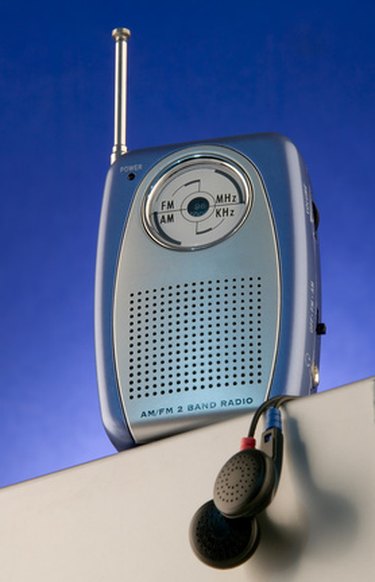
An RF Detector is an electronic device that detects RF (Radio Frequency) signals sent from bugs or other listening devices in a room. Although you can purchase these from online spy and gadget stores, as of 2010, these devices typically cost $200 or more. You can inexpensively build your own device if you want to find out if someone is listening in on your conversations.
Step 1
Place all of your materials on a work table.
Video of the Day
Step 2
Take off the ends off the 41-AWG enameled copper wire with the wire strippers. Two wires will be exposed after stripping.
Step 3
Make a coil of 19 turns of the 41-AWG wire around the end of the toothpick. This is to be done using the first end of the copper wire.
Step 4
Apply glue to the end of the coil to ensure that it will not be removed. Run the other stripped end of the wire through the brass tube with 0.090-inch diameter. Strip another 0.5-inch wire starting from the end of the tube using the wire strippers.
Step 5
Connect the 41-AWG copper to the BNC connector. From the stripped wire, you can see two small wires. Solder the first wire on the "+" contact of the BNC connector and the wire must also be soldered on the "–" side of the BNC connector.
Step 6
Attach the BNC connector to the brass tube using the epoxy. Let it dry. Get a cotton swab and apply glue to it. Rub the cotton swab with glue on the outer side of the wire coiled around the toothpick.
Step 7
Place the toothpick in the brass tube. Push the glued wires so that they will be attached to the sides of the glass tube. Let them stick together and dry.
Step 8
Screw the BNC connector to the female BNC connector of the RF voltmeter. Turn on the voltmeter.
Step 9
Test if it works by moving the brass tube around. If there is an increase in the number displayed on the RF voltmeter, it means your homemade RF detector has caught another frequency from a bug or other electronic listening device.
Video of the Day